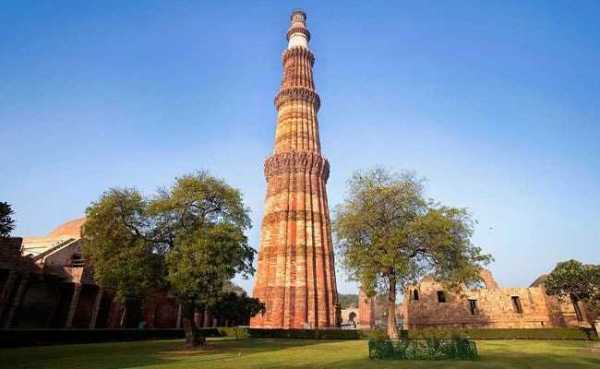New Delhi : A petition seeking to make Kunwar Mahendra Dhwaj a party in a petition demanding permission to worship in the Qutub Minar complex was dismissed by Delhi’s Saket court on Tuesday. Additional District Judge Dinesh Kumar gave this verdict. The court will hear the original petition on October 19 to allow worship in the Qutub Minar complex.

The court had reserved the verdict on Kunwar Mahendra Dhwaj’s petition on September 13. During the hearing, the Archaeological Survey of India and the petitioners seeking the right to worship in the premises had opposed the petition of Dhwaj and demanded that it be dismissed. Mahendra Dhwaja Prasad Singh said that his ancestors were the rulers of Agra province, ruled in South Delhi including the Qutub Minar, therefore, they have ownership rights on the land on which Qutub Minar is located. Therefore the government cannot take a decision on the land around Qutub Minar, he said.
During the last hearing, the Archaeological Survey of India (ASI) opposed the application of Kunwar Mahendra Dhwaja Prasad, saying that there was no justification for hearing his petition. The ASI had said that since 1947, no appeal has been filed in any court regarding the ownership of the land. The ASI had said that no one can claim the right to worship or offer prayers in the protected building.
During the hearing on May 24, petitioner’s coounsel advocate Harishankar Jain had said that the premises have not been used by Muslims for the last eight hundred years. He had said that when there was a temple here long before the mosque, why can’t worship be allowed. Harishankar Jain had cited Section 16 of the Ancient Monuments and Archaeological Sites and Remains Act, which provides for the protection of the place of worship. He had referred to the Supreme Court’s judgment in the Ayodhya case which said that the deity will always be a deity and demolishing will not destroy his character or his dignity. He had said that he is a worshiper, the pictures there are still visible, if there is a deity, then there is a right to worship.
During the hearing, the court had asked what are the legal rights of the petitioner. The court had said that there is no dispute over the existence of the idol. But there is a dispute over the right to worship, the court had said that the question is whether the right to worship is an established right. Is it a constitutional right or some other kind of right? Can the petitioner be barred from the right of worship? If it is assumed that Qutub Minar is not used as a mosque by Muslims, then on what basis does this give the petitioner the right to worship? How can one get a legal right on the basis of some event that happened eight hundred years ago.
The Archaeological Survey of India (ASI) had filed a reply in the court saying that when the ASI took control of the monument, there was no worship there. The ASI had said that there is no provision for worship in the legally protected monument, so the petition should be dismissed.
On April 3, the court had directed the ASI not to remove the idols of Lord Ganesha kept in the Quwwat-ul-Islam mosque premises in the Qutub Minar complex. In this case, the petitioner, who has already filed a petition regarding the right to worship, has said in a new application that the idols of Ganesh ji should not be displaced in the National Museum or any other place as per the suggestion of the National Mutual Authority. Instead, they should be kept in the proper place with full respect in the premises itself.
In the main petition filed through advocate Vishnu Jain, it has been said that this mosque has been built by demolishing 27 temples of Hindus and Jains. Jain Tirthankar Lord Rishabhdev and Lord Vishnu were made petitioners in this case.
On 29 November 2021, Civil Judge Neha Sharma dismissed the petition. The order of the civil judge dismissing the petition has been challenged in the district judge’s court.
The petition states that Qutbuddin Aibak built the Quwwat-ul-Islam mosque in place of 27 Hindu and Jain temples. Aibak could not destroy the temples completely and the mosque was built from the ruins of the temples. The petition said that the walls, pillars and roofs of the Qutub Minar complex have images of Hindu and Jain deities, which suggest that the Qutub Minar complex was a Hindu and a Jain temple. In the petition, Qutub Minar was described as a pole pillar.
The petition referred to the brief history of the Archaeological Survey of India (ASI) which said that the Quwwat-ul-Islam mosque was built from the debris of 27 temples that were demolished. The petition had demanded that these 27 temples be ordered to be restored and worship should be allowed in the Qutub Minar complex as per Hindu rituals.

